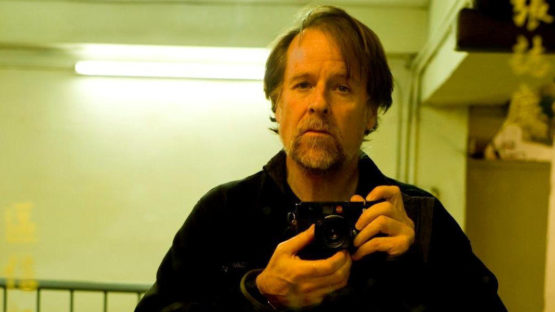According to the Merriam-Webster dictionary, motivation is defined by “the reason or reasons one has for acting or behaving in a particular way.” This motivation or incentive stimulates an individual to perform or act in a specific way. This differs from one individual to the next depending on their core values and beliefs. With motivation, it moves individuals to achieve goal-oriented tasks.
Here is what motivates me as an individual:
 |
| Created by: Courtney Welsh |
Alex Webb
 |
| Photo By: Alex Webb Image Source: https://www.widewalls.ch/artist/alex-webb/ |
 |
| Photo By: Alex Webb Image Source:https://www.dazeddigital.com/photography/article/35120/1/magnums-alex-webb-on-the-power-of-photography |
Photojournalist Alex Webb, responds to the question, “what advice would you give young photographers?” by discussing his motivations behind it. He states “photograph because you love doing it because you absolutely have to do it because the chief reward is going to be the process of doing it.” The motive within the photojournalist should be internally driven and revolve around the passion of doing so. He discusses other rewards such as “ recognition, financial remuneration” as minimal and fleeting- meaning they are of short time and will eventually fade. Within photojournalism, the photographer is able to provoke change give a voice to those who are suffering. This same internal drive and need to photograph is also discussed in Gordon Park’s website that states: “Born into poverty and segregation in Kansas in 1912, Parks was drawn to photography as a young man when he saw images of migrant workers published in a magazine. After buying a camera at a pawnshop, he taught himself how to use it and despite his lack of professional training, he found employment with the Farm Security Administration (FSA), which was then chronicling the nation’s social conditions.” Although born into poverty, he never once discussed money or recognition as the route of motivation to document but instead, he connected his self-taught ability and passion behind a camera as “a weapon against poverty, against racism, against all sorts of social wrongs.”
Giles Duley
 |
| Photo By: Unknown Image Source: https://www.billbradshaw.co.uk/blog/giles-duley-one-second-light-exhibition |
 |
| Photo By: Giles Duley Image Source: https://www.theguardian.com/world/2017/jan/01/syria-disabled-refugees-update-giles-duley-photography |
Giles Duley’s conversation with famous war photojournalist Don McCullin discusses their need to photograph people in such horrific events. Giles, who was inspired young by Don McCullin and his ability to not glamorize war and make of a heroic sense of either side, states “I set out not to document the war element but the consequences of war and what happens to civilians. So maybe I start from the point of understanding that you had reached. I learned from that and carried on. In my work, it’s always about that connection with the person’s eyes, or somebody holding hands, those little moments of intimacy, little gestures. That’s my continuation of Don’s work.” The underlying theme in the discussion between Duley and McCullin is capturing raw emotion and displaying it to answer the question “can you change the world with your photograph” and Duley’s respond is “I would say, no, but maybe we can inspire the people who do. Much like photojournalist Ed Kashi who states “is to tell visual stories that not only inform viewers but also inspire them to find ‘activist solutions to social problems."’ Kashi and Duley share common motives to create awareness and seek out change for those that suffer by documenting harsh environments all over the world.
Susan Meiselas
 |
| Photo By: Unknown Image Source: https://www.radcliffe.harvard.edu/people/susan-meiselas |
 |
| Photo By: Susan Meiselas Image Source: https://www.susanmeiselas.com/ |
Susan Meiselas, a photojournalist that has covered a variety of topics ranging from Central Africa’s conflict, human rights issues, and sex trafficking. In the interview held by Sarah Stacke, it is discussed that Meisela’s photography “has broken through glass ceilings, paving the way for other women. She’s also consistently made space for women’s voices to be heard through her work.” It is added that Meisela’s work help “‘show a fascination with women who trespass boundaries of convention and acceptability.’” and "’It is particularly timely now to look at these women—and Meiselas herself, for that matter—and learn from their struggles for autonomy, self-determination, and respect."’ Meiselas discusses that she held many fewer opportunities and education that most emerging photojournalists have now. This disadvantage did not hold her back because she advocated for herself and did as what she believed in. Meiselas states, “The issue at heart about success is finding your own path and surviving, that’s the bottom line, realizing the interior landmarks of success. My work wasn’t collected by a major institution until the last few years.” Similarly to Susan Meiselas, Xyza Cruz Bacani from the Philippines moved to Hong Kong to work as a maid. Upon her day off, she began taking pictures and now years later recently received a fellowship to pursue photojournalism in New York with Magnum. Although her work as a photojournalist has gotten major recognition- she still works 6 days a week and photographs during her one day off.
In comparing and contrasting the motives of the three listed photojournalists and myself there are a few similar and different points in why we chose the profession that we did. I discussed that I chose the profession in nursing because of the need to help people, I am passionate about it, and I possess a caring nature within myself. These three were also discussed above by each of these photojournalists by providing a voice for those that they document and by providing awareness to society in order to provoke societal change. One major difference I can point out from my motivation map and what they discussed is job security. Many of these photojournalists have to work extremely hard for the photographs and they are not guaranteed their work to be published or utilized. Although it is extremely rewarding when it does, it is not necessarily listed as their motivations because of it.
No comments:
Post a Comment